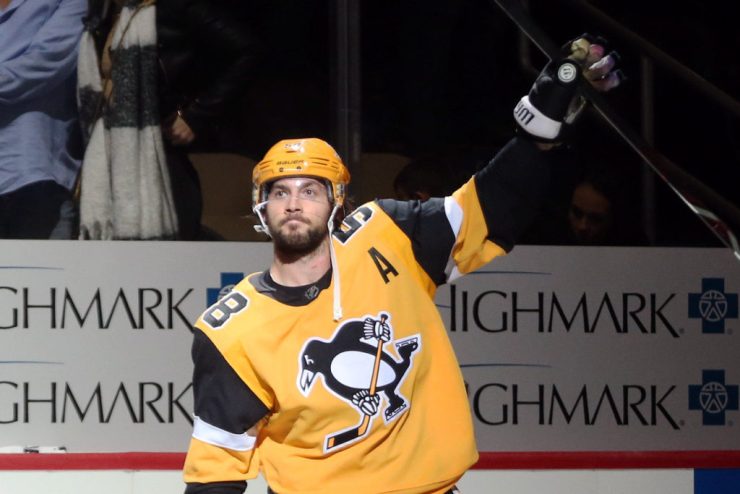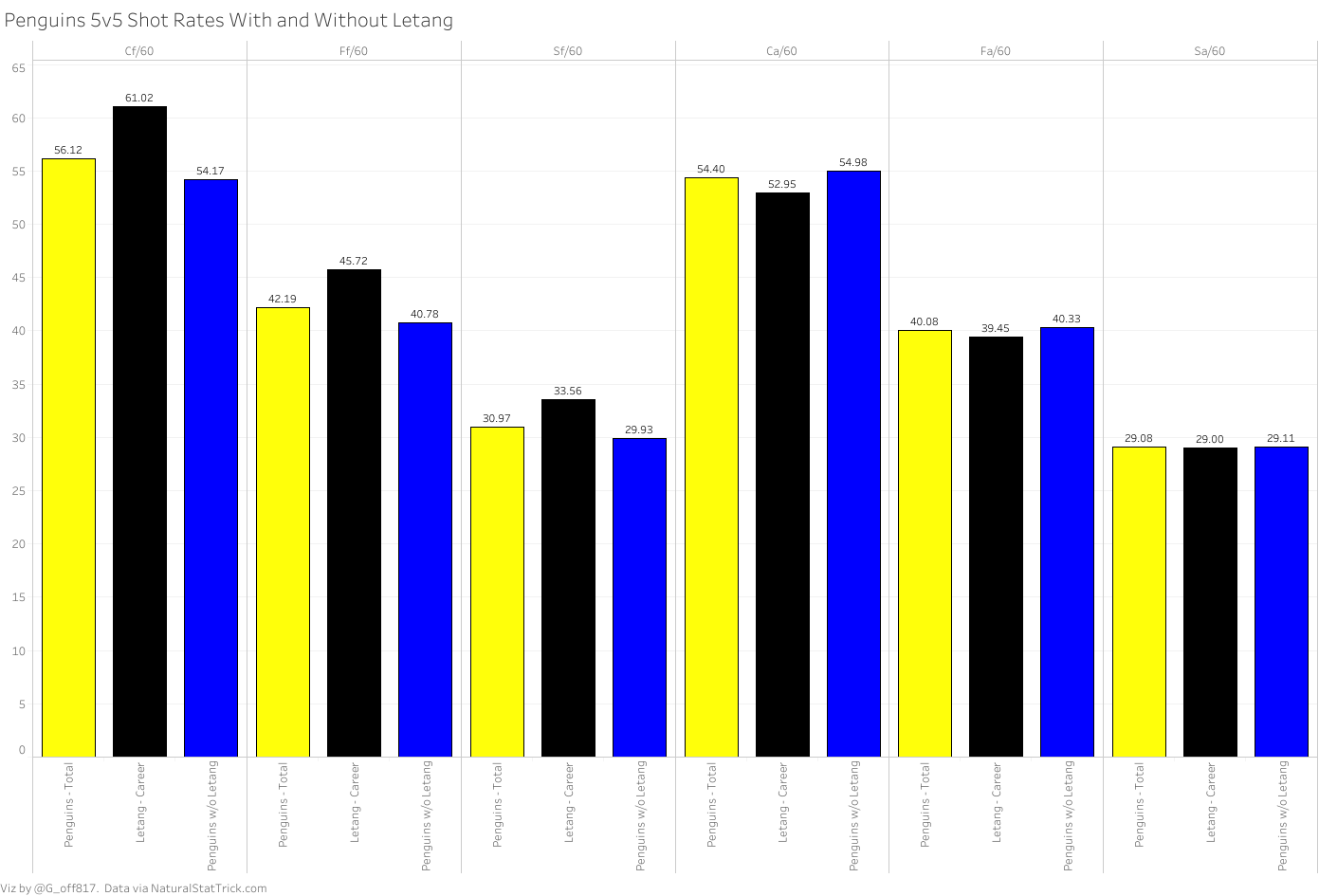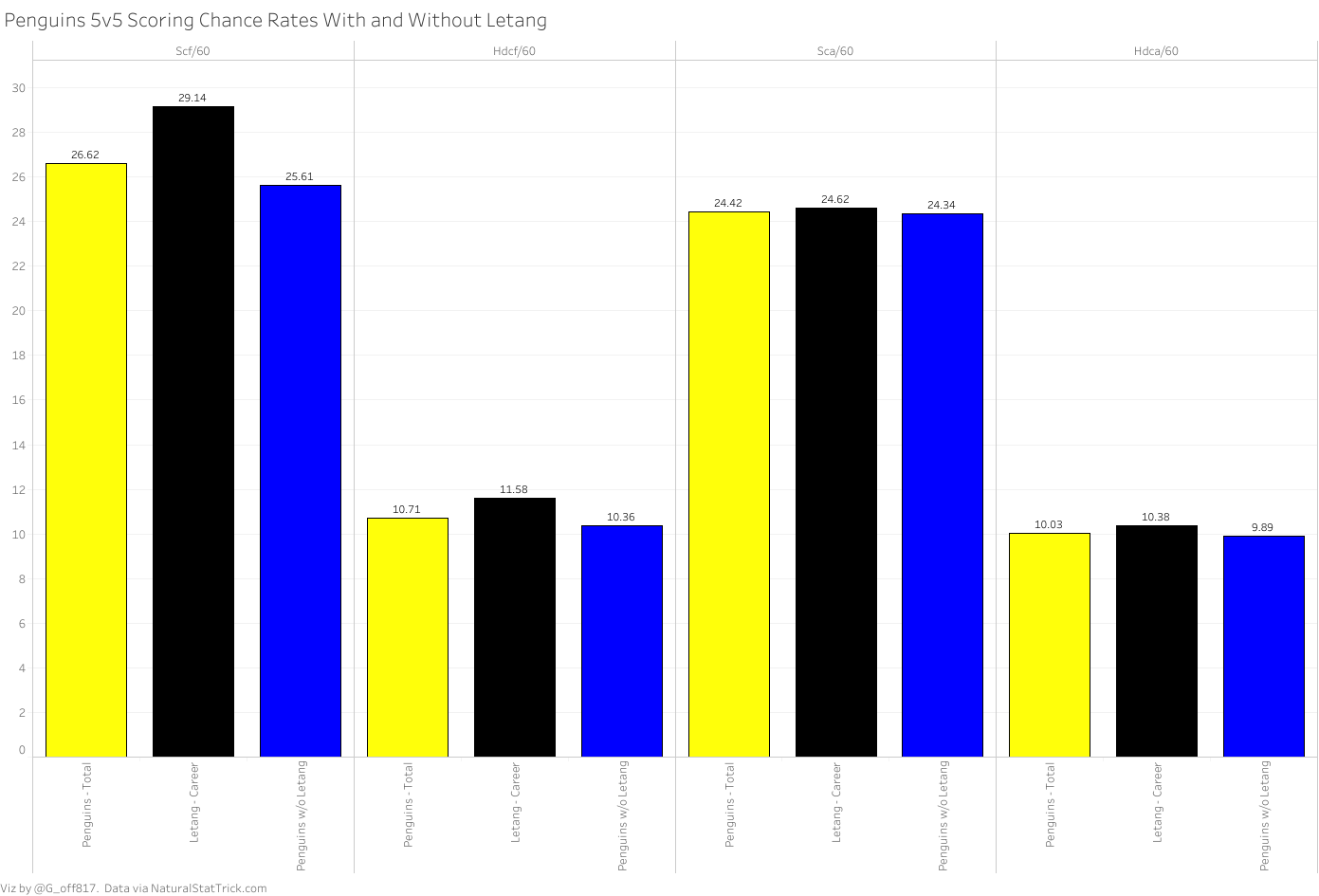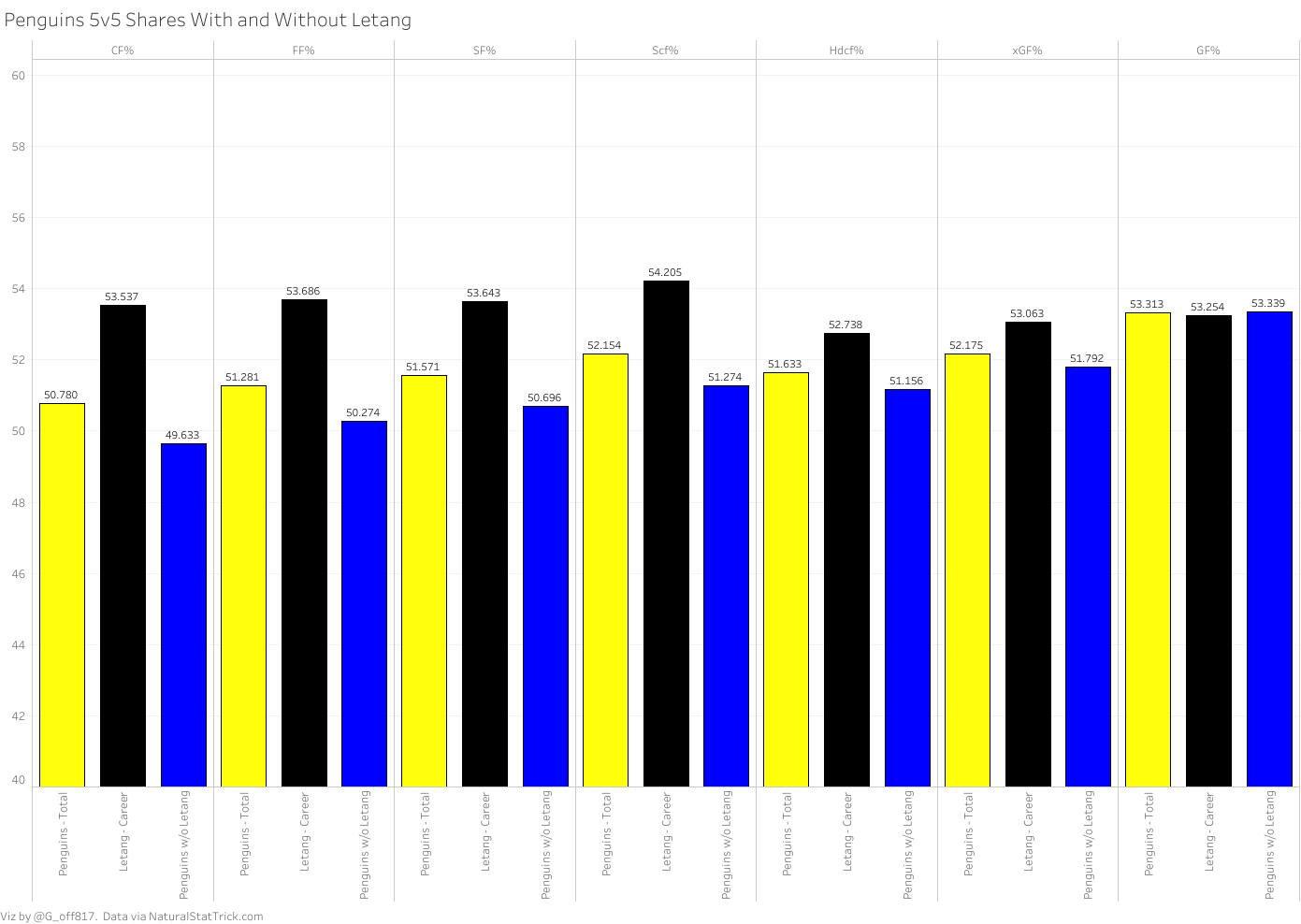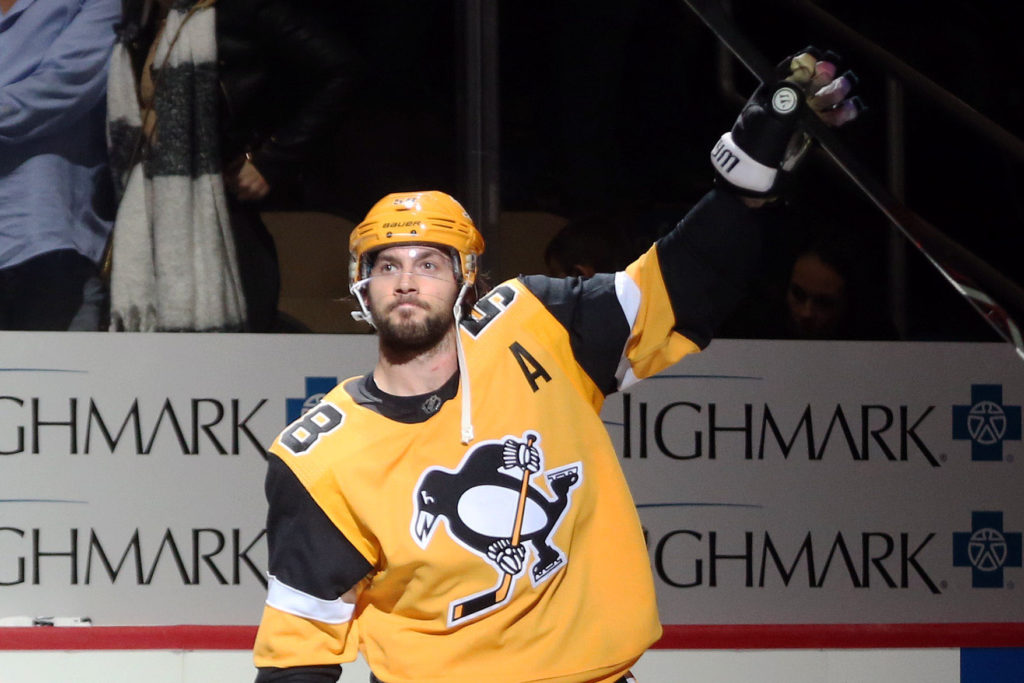
Until suffering a neck injury at the hands of Shayne Gostisbehere in the Stadium Series game this season, the Penguins MVP award was probably down to a two horse race.
Had it not been for Crosby’s incredible 100 point season at the age of 31, perhaps no one was more of a lock for the award than Kris Letang.
https://twitter.com/G_Off817/status/1050541430270255104
In the Norris conversation at various points of the year, Letang himself had one of his best, if not his best, season on record, scoring 16 goals (joint-most in his career), 40 assists, and 56 points (his second-best season total ever) across 65 games.
On top of that, his 10 goals, 22 total assists, 13 primary assists, and 32 total points at 5-on-5 play were all career highs.
https://twitter.com/G_Off817/status/1080638736877129729
And, as you might expect, these totals put him in the upper echelon of NHL defensemen this season, despite having played just 65 games:
| Category | Total | Rank |
| Goals (All situations) | 16 | Tied 5th |
| Primary Assists (All Situations) | 25 | Tied 5th |
| Total Assists (All Situations) | 40 | 14th |
| Total Points (All situations) | 56 | Tied 8th |
| Goals (5v5) | 10 | Tied 4th |
| Primary Assists (5v5) | 13 | Tied 5th |
| Total Assists (5v5) | 22 | 13th |
| Total Points (5v5) | 32 | 10th |
What’s impressive here is that Letang found himself in the top 10 across the board in everything except Total Assists while missing 17 games.
To put it in perspective, among all defensemen, no one scored more 5-on-5 points than Morgan Rielly and his 43 in 82 games. Per 60 minutes of 5v5 ice time, that works out to 1.72 points for Rielly (2nd most in the league among D-men that played 500+ minutes). Letang’s 1.53 per 60 was 4th most (Giordano – 1.8 and Burns – 1.66 were 1 and 3 respectively) in the league among that pool of defensemen.
TLetang saw 19:15 of 5v5 ice time this season. That comes out to about 1578:30 of total 5v5 ice time had he played 82 games. At a rate of 1.53 5v5 points per hour of play, that works out to about 40 points on the season at 5v5, tied for 3rd most in the league with Mark Giordano. Applying this same methodology to his points in all situations per 60 minutes (1.99), it works out to 70-71 points across 82 games.
That would’ve been his best season to date and the 4th most points among defensemen in the league.
In other words, if Letang doesn’t miss those 17 games, it’s hard to imagine a world where he isn’t in the conversation of top 5 defensemen in the league this season (if he wasn’t already).
Put another way, there are only about 4 or 5 defensemen from this past season that could step in and bring what Letang brings on a nightly basis.
Yet, despite arguably putting together his best season of his career, an injury defending his teammate, roughly 2 mistakes in this year’s playoffs, and the Penguins having won a Cup without him, his is name popping back up in the trade rumors once again (though Kessel has stolen that spotlight now).
Of course, with Letang, you have to always take the bad with the good. Someone that always has the puck on their sticks will inherently and naturally turn it over. The puck stopping on him in overtime of Game 1 and a poorly timed pinch down the wall in Game 4, both resulting in goals against, do not and should not define his season or derail the conversation where he was arguably the best Penguins player and one of the best defensemen on the planet.
This is especially true when you consider that Jake Guentzel and Sidney Crosby likely don’t score points against the Islanders had it not been for a great Letang pinch 35 seconds into Game 4 from a microanalysis perspective.
But without relitigating this season, where Letang was objectively brilliant and ranked as the 4th best defenseman Corsica, let’s take a look at just what the Penguins look like from a data perspective with and without Letang on the ice/without Letang in the lineup both this season and over the course of his entire career.
For the Penguins and Letang, we know full well about Letang’s injury history. Having played a full 82 game season just once in his career (2010-11), he’s been victimized by head shots and concussions, a stroke, and a broken neck during his career as a Penguin.
(Sidney Crosby can attest to how difficult is it to play a full 82 game season, after all.)
As a result, since the start of the 2007-08 (Letang’s first full season in the NHL), we have data on 210 games the Penguins have played without Letang and a total of just under 31,671 minutes of 5-on-5 play in which Letang was either out of the lineup or on the bench out of a total 950 regular season games and just over 44,294 minutes of 5v5 play.
In Letang’s previous 740 games played, he’s amassed just over 12,623 minutes of 5v5 play, or 28.50% of the total 5v5 ice time the Penguins have seen over the last 950 games.
That gives us more than enough of a sample size to see just how the Penguins do with Letang and without Letang.
Spoiler alert: His impact is extremely good.
First, let’s take a look at the Penguins shot attempts for and against (CF/CA), unblocked shot attempts for and against (FF/FA), shots on goal for and against (SF/SA), goals for and against (GF/GA), expected goals for and against (xGF/xGA), scoring chances (SCF/SCA) and high danger chances (HDCF/HDCA) for and against at a rate of 60 minutes of 5v5 play both with and without Letang since 2007-08:
To break it down, you can see that per 60 minutes of 5v5 play, the Penguins generate nearly 7 more shot attempts, almost 5 more unblocked attempts, 3.63 more shots on goal, 3.53 more scoring chances, 1.22 more high danger chances while Letang is on the ice versus that of when he is off of it in some capacity.
The Penguins are also generating about a quarter of an expected goal and actual goal more when Kris Letang is on the ice compared to when he’s off of it or out of the lineup:
In terms of those events happening against the Penguins, they see slightly fewer against in some cases with Letang on the ice or little/marginal change, impacted slightly by goaltending in his actual goals against per hour.
In other words, from a defensive/suppression standpoint, the Penguins are virtually the same team with and without Letang over the course of his career.
The difference comes over the last 3 seasons, where relative to the rest of the team, the Penguins have given up 5.18 fewer shot attempts, 2.12 fewer unblocked attempts, 1.9 fewer shots on goal, and 0.8 fewer scoring chances per 60 minutes of 5v5 play with Letang on the ice compared to when he’s off of it.
Put another way, if Letang were a liability in his own end of the ice, we’d see a larger discrepancy in the “Against” stats without Letang on the ice (the blue bar) compared to that of with him on it (the black bar) and in the relative stats over the last 3 years.
But we don’t.
And, as you’d expect based on the above, the Penguins are a tangibly better team in terms of their share of the aforementioned data buckets, too:
What we see here, nearly across the board, is that the Penguins are discernibly better with Letang on the ice than they are without him at controlling the share of events that take place while he’s on the ice. Because of his ability to move the puck in a positive direction and next to no change in the puck coming back at him and the Penguins as a whole, we can see here just how better off the Penguins are with Letang in terms of controlling the play.
The lone difference being the share of actual goals, which, when you think about it, makes sense. Hockey is an inherently random sport and perhaps nothing is impacted more by that variance than goal scoring.
An example of this can be found as early as the last two seasons: Letang in 2018-19 was on the ice for 74 goals for and 47 against. Last season, that was 55 for and 77 against.
The PDO train went off the rails in 17-18.
But on a long enough timeline, the rate at which they are scored and stopped will regress back to the mean. For Letang and the Penguins:
| On-Ice Shooting Percentage | On-Ice Save Percentage | PDO | |
| Penguins Since 2007 | 8.31 | 92.25 | 100.6 |
| Penguins Since 2007 -With Letang | 8.23 | 91.64 | 99.9 |
| Penguins Since 2007 – Without Letang | 8.34 | 92.50 | 100.8 |
A PDO of 100 here in all 3 scenarios with this large of a sample size is what normal is. So it should make sense, on this large of a timeline, why the shares of goals for are nearly identical for the Penguins and Letang.
In fact, aside from the actual goals scored while he is on the ice being largely the same, the Penguins improve anywhere between 2 and 4 percentage points across the entire spectrum here with Letang on the ice over the course of his career, which is exactly what you want out of your #1 defenseman.
It has to be said that, while yes, the Penguins did win a Cup without Kris Letang, the method by which they accomplished that feat is one that isn’t anywhere close to being sustainable long term is only manageable in short bursts.
Teams PDO their way to wins all the time, but never long term.
In those 25 playoff games in 2017, the Penguins found themselves in the bottom five of shares of shot attempts, unblocked attempts, shots on goal, and scoring chances as well as sitting at under 50% in expected goals at 5v5.
They nearly never had the puck.
They got “hot at the right time” in converting the chances they got, leading the 16 playoff teams with an 8.77 shooting percentage and the 2nd best PDO of 1.018. Pucks were going in for them and were staying out against them.
Compare that to the 50%+ and finding themselves in the top 5 in nearly every bucket, leading the playoff field in many, despite a middling SH% and SV% in the 2016, where Letang factored in on every game winning goal in the Cup Final, and you get a pretty good sense as to how valuable Kris Letang is to this team and this franchise.
Verdict: You don’t trade that away and come out on top now or in the future.
And for the Penguins, Kris Letang is the best they can ask for and makes them a better team.
All data courtesy of NaturalStatTrick.com unless otherwise noted.
Add The Sports Daily to your Google News Feed!
